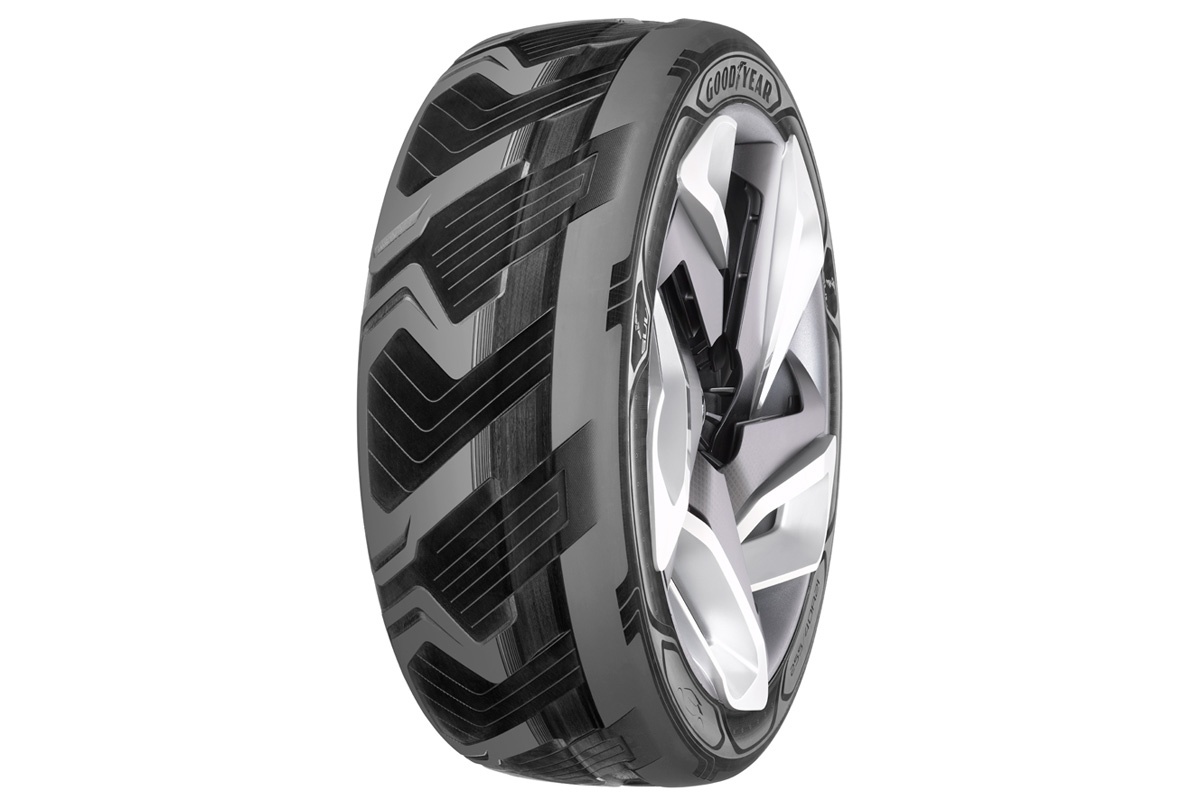Legendary musician Stevie Ray Vaughan, who died 25 years this month, and his band Double Trouble, entered the Rock and Roll Hall of Fame in April. The tires on your car might help you get to the museum in Cleveland, Ohio, some day in ways you wouldn’t expect. Goodyear has unveiled tires that turn the heat generated in them while driving into electricity that can charge an electric vehicle’s battery.
Rock Hall of Fame Welcomes Texas Legend
Stevie Ray Vaughan, the late Texas blues-rock legend, and his band Double Trouble were inducted into the Rock and Roll Hall of Fame in April. Vaughan died 25 years ago, August 27, 1990, in a late-night helicopter crash on the way to Chicago after a concert in Wisconsin.
The three members of Double Trouble participated in the induction ceremony in Cleveland. Jimmie Vaughan, also a musician, spoke about his younger brother, who started playing guitar as a child in Dallas, moved to Austin to hone his craft and won a Grammy in 1989.
“I sometimes think he’s on tour and is going to come back soon,” Jimmie Vaughan said. “Then I remember that I’m never going to be able to see him again.”Stevie Ray Vaughan was 35 when he died.
Deflating Electric Vehicle Anxiety
So you’re hesitant to buy an electric vehicle because you might get stranded. What if your tires could charge the battery as you drive?
At the 85th Geneva International Motor Show in Switzerland in March, Goodyear unveiled a concept tire called BHO3, Electric Co-op Today reports. Tires create heat while you drive, and materials in the BHO3 capture the energy from that heat and transform it to charge an EV battery.
Gizmag.com explains that the ultrablack tire absorbs light and heat, and the tread absorbs heat. A special fishnet lining inside the tire turns the heat into electrical current. A cooling system in the sidewalls prevents overheating.
Goodyear says the tire could be the solution to range anxiety —the fear of being left with a drained battery—that keeps many people from considering an electric vehicle.
Wisdom for Every Season
Texans’ fascination with weather is on the radar this month (see “Texas Skies”). Part of the staying power of “The Old Farmer’s Almanac,” which began publishing 223 years ago, is its weather forecasts and planting charts. Modern agriculture relies on computer data, not the long-term prognostications in the old annual, but the almanac continues to churn out guiding wisdom from its office in Dublin, New Hampshire, including:
Folklore for the Season
Observe on what day in August the first heavy fog occurs, and expect a hard frost on the same day in October. If the first week of August is unusually warm, the winter will be white and long.
Best Days in August
Based on moon phases, these are the best dates for cutting hay: 4, 5, 31; for setting eggs: 1, 8, 26–28; and for fishing: 14–29.
Moon Folklore
Clothes washed for the first time in the full moon will not last long. If you glimpse the new moon over your right shoulder, you will have good luck. To have a project prosper, start it during the new moon. Babies born a day after the full moon enjoy success and endurance.
En-Lightning Facts
• Lightning flashes globally per year: 1.4 billion
• Lightning strikes in the U.S. per year: 25 million
• Cloud-to-ground flashes in 2014 in Texas: 2,687,765, most in the nation
• Odds of being struck by lightning in a given year in the U.S.: 1 in 1.19 million
• Up to 5 percent of lightning strike victims are hit indoors while talking on landlines.
• Up to 90 percent of lightning strike victims survive. The odds are increased if the victim is with others who know CPR.
By the Numbers: 1,080,000
The number of hunting activities by Texas residents in state and out of state in 2011, according to the U.S. Fish & Wildlife Service’s National Survey of Fishing, Hunting, and Wildlife-Associated Recreation. The survey is conducted every five years; the next one will be in 2016 by Texas residents in state and out of state in 2011, according to the U.S. Fish & Wildlife Service’s National Survey of Fishing, Hunting, and Wildlife-Associated Recreation. The survey is conducted every five years; the next one will be in 2016. The 1,080,000 Texas hunters spent an average of $1,622 each. To learn more about hunting in Texas, see “Right With the World.”




